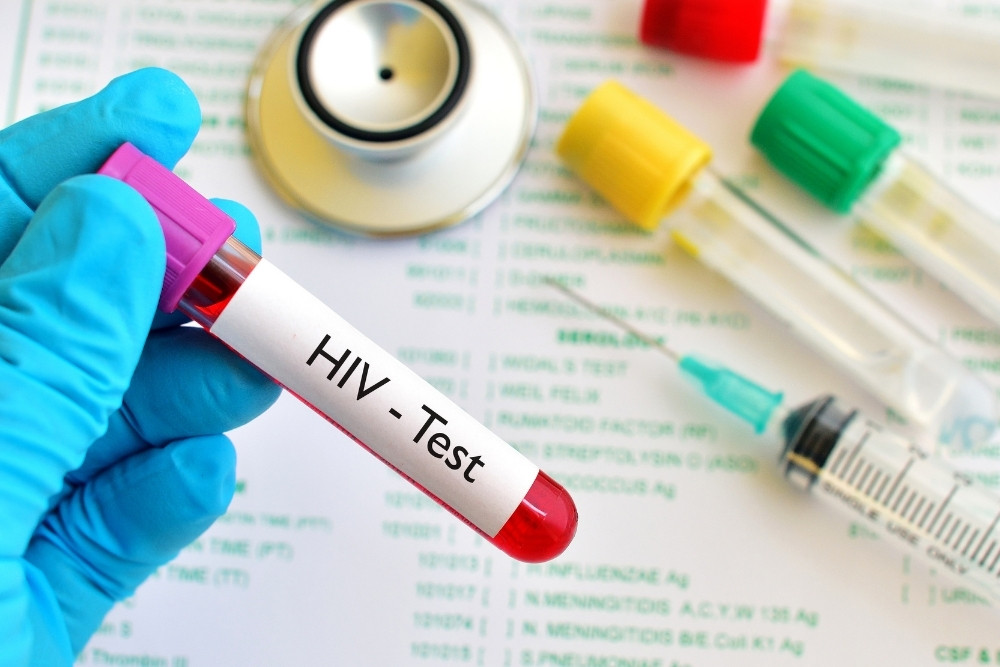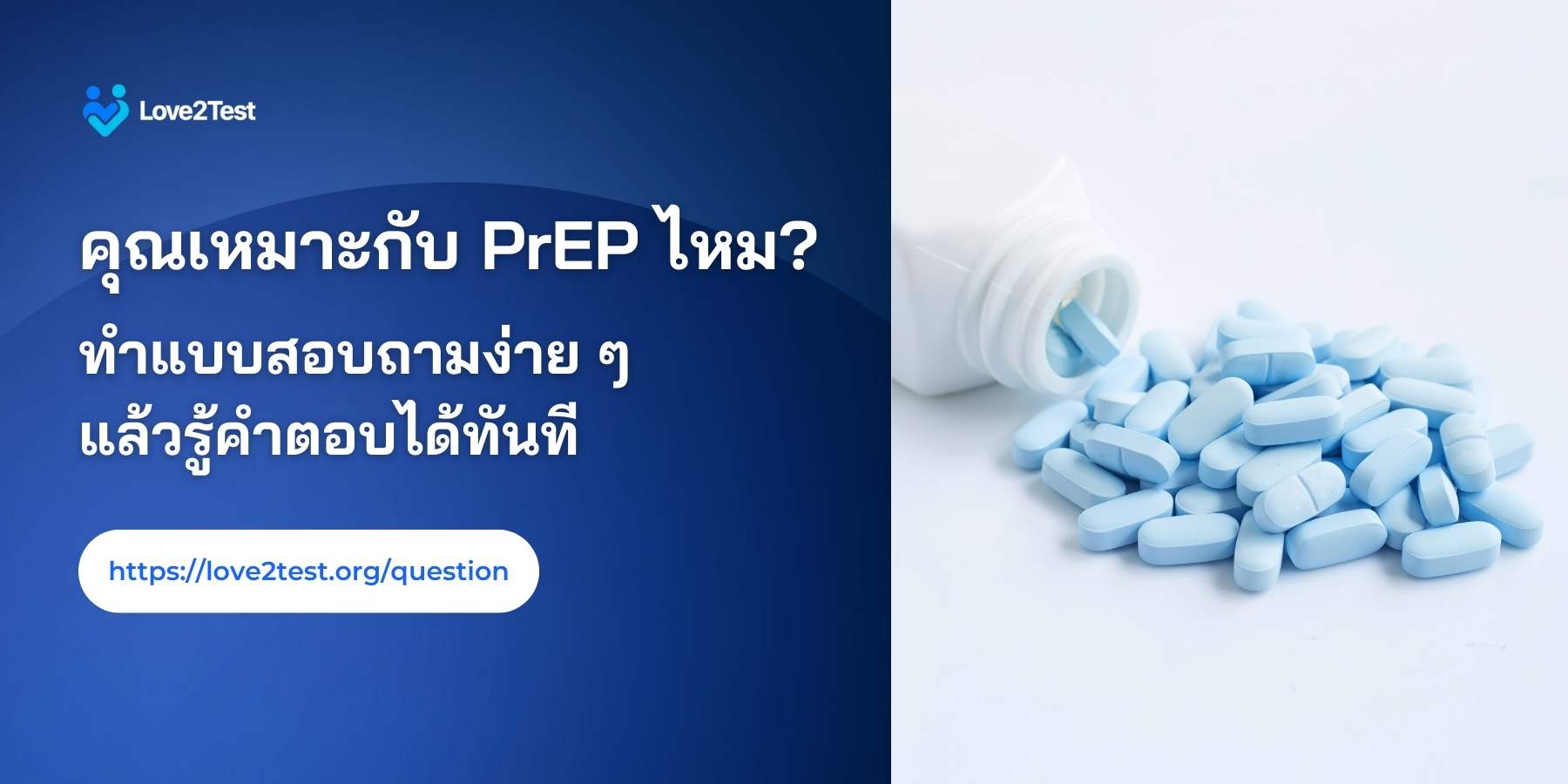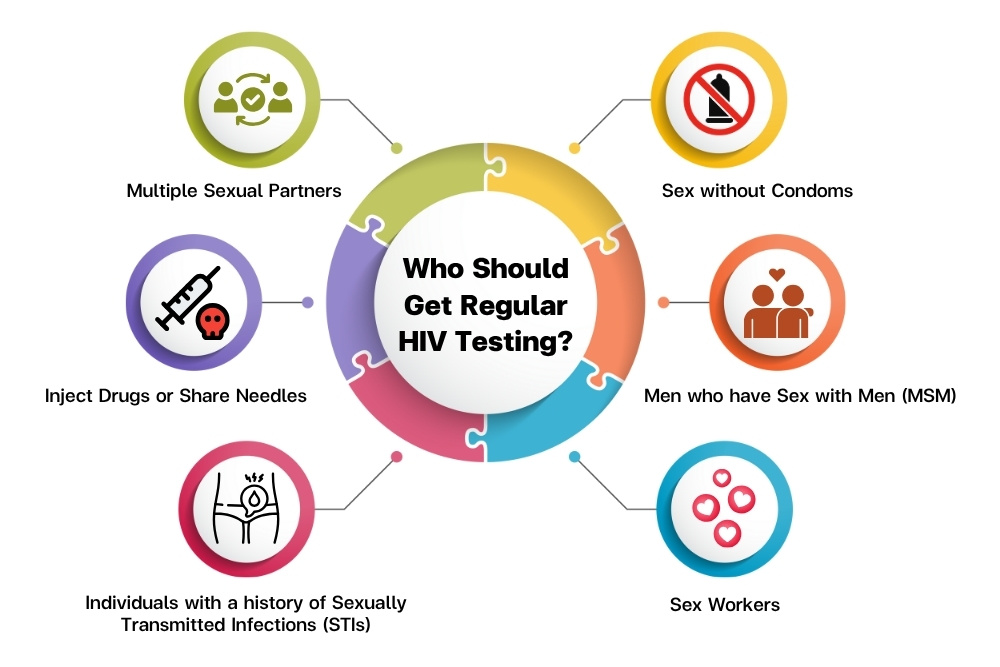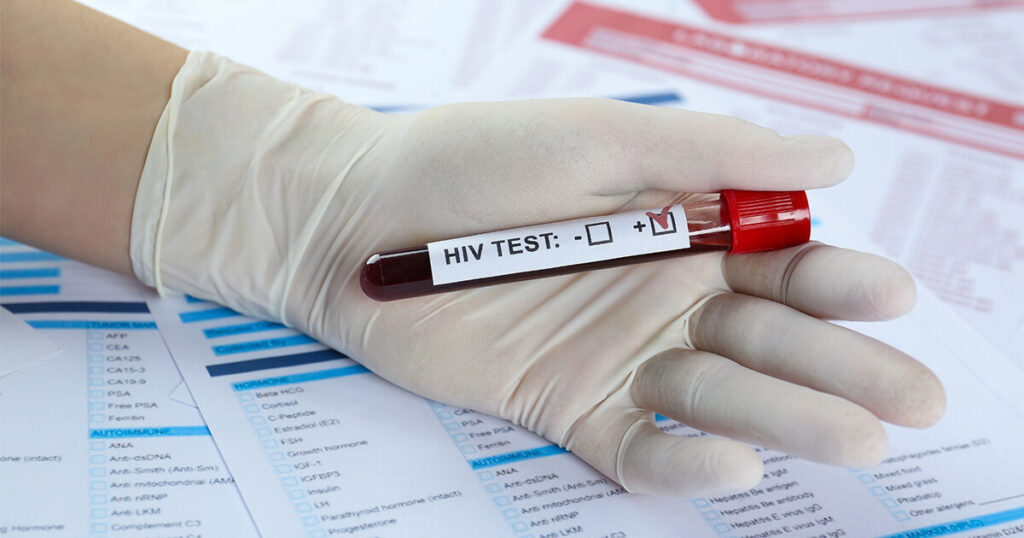HIV Testing Explained — why does it matter, and who really needs it? Many people still hesitate to get tested, especially after engaging in risky behavior or having unprotected sex. In today’s world, HIV testing is not something distant or difficult anymore. Early detection plays a crucial role in helping you protect your own health—and the health of your loved ones. One important fact to understand is that HIV tests may not provide accurate results immediately after exposure. This is because the body needs time to produce antibodies in response to the virus, a phase known as the “Window Period” which typically lasts around 21 days but can vary from person to person. That’s why timing your test correctly is just as important as getting tested in the first place.
In this article, HIV Testing Explained will guide you through why testing is essential, who should get tested, the types of tests available, and how to prevent HIV. Understanding your status is a powerful step toward living confidently, safely, and equally.
HIV Testing Explained – Why It’s Essential for Everyone
The question “Is HIV testing really necessary?” still lingers in the minds of many Thais. Fear of the results, lack of information, and social stigma continue to hold people back. However, statistical data clearly shows that HIV testing is not only important for personal health, but also plays a critical role in controlling the spread of the virus across society. According to estimates from Thailand’s Ministry of Public Health, more than 1.2 million people in Thailand have been infected with HIV since the beginning of the epidemic. Approximately half of them have died, while around 600,000 are currently living with the virus.

Every year, about 16,000 new infections are reported, and roughly 10,000 people die from AIDS-related illnesses. While the death rate has declined thanks to better access to healthcare and antiretroviral treatment, a major challenge remains: finding people who are living with HIV but are unaware of their status, so they can begin treatment early.
“One truth cannot be overstated:
“The only way to know if you have HIV is to get tested.”
Breaking Myths: HIV Testing Is for Everyone
Many people still wrongly believe that as long as they feel healthy or show no symptoms, they must be HIV-free. This is a dangerous misconception. HIV often shows no symptoms in its early stages, and it may take years before any serious health problems appear. This delay in detection increases the risk of unknowingly spreading the virus to others. Another common misunderstanding is the belief of being “low-risk” even among those who have had unprotected sex, multiple sexual partners, shared needles, or had other sexually transmitted infections (STIs). Such assumptions prevent people from accessing timely and effective care.
To address these challenges, the Thai government now provides free HIV testing twice a year for all citizens and encourages people to make HIV screening a routine part of their annual health check-ups. The goal is to normalize HIV testing and emphasize that it is not just for certain groups, but a right and responsibility for everyone in society.

HIV Testing Explained – Is It Necessary? It Depends on Your Risk
While the word “RISK” might feel distant or irrelevant to many people, the truth is that everyday behaviors we often consider harmless may actually expose us to HIV without us even realizing it. That’s why HIV testing shouldn’t be limited to specific groups—it should be a routine part of health care that everyone can access, especially for those who engage in higher-risk behaviors.

High-Risk Behaviors That Require Immediate HIV Testing
f you’ve experienced any of the following, you should get tested for HIV as soon as possible and repeat testing at appropriate intervals:
- Having sex without using condoms, regardless of whether it’s with a regular or casual partner
- Having multiple sexual partners or frequently changing partners
- Having a partner whose HIV status is unknown
- Having sex with someone who is HIV-positive or whose status is unclear
- Having a history of Sexually Transmitted Infections (STIs) such as gonorrhea, syphilis, or herpes
- Sharing needles for drug use or undergoing tattoos, piercings, or body modifications at non-certified places
- Having experienced sexual assault
- Receiving blood transfusions or organ transplants before rigorous HIV screening became standard (before 1992 in Thailand)
Can You Still Be at Risk Without Having Sex?
Yes. Many assume that avoiding sex means avoiding HIV, but that’s not entirely true. Other, less obvious routes of transmission also exist, including:
- Sharing needles—whether for drug use or medical injections performed by non-medical personnel
- Getting tattoos, piercings, or cosmetic procedures at unregulated or unhygienic places
- Occupational exposure to blood or bodily fluids, such as for health workers
- Being born to a mother living with HIV (although current medical protocols can greatly reduce transmission)
There are also cases of “unintentional risk”, such as having unprotected sex while intoxicated or being unable to consent or protect oneself during abuse.
HIV Testing Explained – Broader Contexts of Risk
HIV testing shouldn’t be tied exclusively to sexual activity. Risk should be assessed in a broader context that includes lifestyle, environment, and individual circumstances. If you’ve ever faced any of these situations, you deserve to get tested in a safe, judgment-free environment. HIV testing is about taking control of your health—not about stigma or assumptions.
Who Should Get Regular HIV Testing?
Even without any noticeable symptoms, regular HIV testing is a vital part of maintaining good sexual health. It’s not just about knowing your own status—it’s also about protecting those around you. In today’s world, HIV is no longer a life sentence. It’s a manageable condition when detected early and treated promptly. Getting tested regularly is a responsible, empowering step that contributes to both personal and public health.
High-Risk Groups Who Should Test Every 3–6 Months
The following groups are considered at higher risk and are advised to undergo HIV testing every 3 to 6 months:
- Individuals with multiple sexual partners
- Those who have sex without using condoms
- Partners of people living with HIV
- People who inject drugs or share needles
- Individuals with a history of sexually transmitted infections (STIs) such as syphilis, gonorrhea, or herpes
- People with new sexual partners or whose partner’s HIV status is unknown
- Sex workers
- Men who have sex with men (MSM)
- Healthcare workers who may be exposed to blood or bodily fluids in emergency situations
Regular testing helps detect the virus at an early stage, increasing access to effective treatment and reducing the risk of transmission. If you belong to any of these groups—or have had any high-risk exposure—make HIV testing a part of your health routine.

HIV Testing Explained – Is It Necessary If You’re in a Relationship—or Not in One at All?
Many people believe that having only one partner—or not being sexually active—means they are completely safe from HIV. But in reality, HIV risk is not determined solely by your relationship status.
- If You’re in a Relationship: Being in a committed relationship doesn’t automatically eliminate HIV risk. Here’s why regular testing still matters:
- If you’re in an open relationship, or haven’t been tested together before starting the relationship, routine HIV testing is essential.
- Even in a monogamous relationship, if either partner has engaged in risky behavior in the past, undetected HIV may still be present.
- Getting tested together fosters trust, transparency, and shared responsibility for each other’s health.
- If You’re Not in a Relationship: Not being in a relationship doesn’t necessarily mean zero risk. Even without regular sexual activity, HIV testing may still be relevant:
- You may have had unprotected sex in the past and forgotten about it.
- Other risk factors—such as getting tattoos or piercings at unregulated places, or sharing sharp objects—can also pose a threat.
- HIV testing is a way to care for your future self, especially if you plan to begin a new relationship down the line.
No matter your relationship status, knowing your HIV status empowers you to take control of your health. It’s not about doubt or distrust—it’s about safety, awareness, and care.
HIV Testing Explained – Simple, Painless, and Worth It
Many people hesitate to get tested for HIV out of fear—fear of the process, fear of pain, or fear of the emotional impact if the result is positive. But in reality, HIV testing today is quick, safe, and far less intimidating than most people think. With modern tools and support, testing has become more accessible, accurate, and confidential than ever.
Here’s a step-by-step explanation of how HIV testing works—and why you don’t need to be afraid.
General Steps for HIV testing
1. Pre-Test Counseling
Before the test, you’ll speak with a trained healthcare professional who will provide accurate information about HIV and help ease any concerns. This session typically includes:
- A discussion about your potential risk behaviors (e.g., unprotected sex, needle sharing, unknown partner status)
- An explanation of the window period, the time after exposure when HIV might not yet be detectable
- Advice on whether it’s the right time to test now or if you should wait for the most accurate results
- Answers to questions like “Is my result confidential?” or “What happens if I test positive?”
This step is designed to help you feel informed, empowered, and supported.
2. Sample Collection
After counseling, your sample will be collected. There are several testing options available depending on your preference:
- Rapid Finger-Prick Test: A small drop of blood from your fingertip gives results within 15–20 minutes.
- Venous Blood Draw (Laboratory Test): More accurate, this method is used in clinics and hospitals, and results are usually available in 1–3 days.
- Oral Fluid Test (Self-Test Kit): A non-invasive method using saliva, ideal for home use. These kits are certified and reliable.
- NAT (Nucleic Acid Test): Used in specific cases, such as testing during the window period. It detects the virus directly and can identify infection earlier than antibody-based tests.
All methods are safe, minimally invasive, and your information is kept strictly confidential.
3. Waiting for Results
The waiting period depends on the test type:
- Rapid Tests: Results are available in 15–20 minutes
- Lab-Based Tests: May take 1–3 days
If the initial result is reactive (positive), a second, more specific test will be done to confirm the diagnosis. During this time, staff will guide you on how to protect yourself and others, and help manage any anxiety or uncertainty.
4. Post-Test Counseling
This final step is critical, whether your result is positive or negative:
- If your result is negative, the counselor will explain what this means and when to consider re-testing if your last risk was recent. You’ll also receive advice on how to continue protecting yourself.
- If your result is positive, you’ll learn that HIV is no longer a death sentence. With early access to antiretroviral therapy (ART), people living with HIV can lead long, healthy lives. You’ll be supported through the next steps, including starting treatment and staying well.
- Emotional Support: Many clinics offer psychological counseling or peer support to help ensure you don’t feel isolated or overwhelmed by the result.
Where to Get Free HIV Testing in Thailand
Did you know that all Thai citizens are entitled to two free HIV tests per year? This is a national healthcare benefit that should not be overlooked. Regular HIV testing not only helps you stay informed about your own health status—it also reflects your responsibility to your partner and your community.
Free testing is available at public hospitals, anonymous clinics, community health centers, and clinics supported by the National Health Security Office (NHSO) or the Ministry of Public Health. Below are some clinics in Thailand that offer free HIV testing, along with links to book your appointment online.
| Clinic Name | Province | Booking Link |
| Rak Puen Clinic, Vajira Medical Faculty, Navamindradhiraj University | Bangkok | https://love2test.org/clinic/rakpuen-nawamin |
| Buddy CU Clinic | https://love2test.org/clinic/buddy-cu-clinic | |
| RSAT Ramkhamhaeng | https://love2test.org/clinic/rainbow-sky-association-of-thailand-rsat | |
| Mplus Thailand | Chiangmai | https://love2test.org/clinic/mplus-thailand |
| Caremat | https://love2test.org/clinic/caremat-chiangmai | |
| Sisters Foundation, Pattaya | Chonburi | https://love2test.org/clinic/sisterspattaya |
| SWING Pattaya | https://love2test.org/clinic/swing-pattaya |
You can also find more HIV-friendly clinics and book your free test through Love2Test.org, a platform dedicated to helping you access sexual health services across Thailand—safely, conveniently, and confidentially.
Related Articles
Summary: Is HIV Testing Really Necessary?
HIV testing isn’t just about disease prevention—it’s an act of love and responsibility toward yourself and the people around you. Knowing your HIV status empowers you to take the right steps, whether it’s timely access to treatment if the result is positive, or adopting safer behaviors if the result is negative.
In today’s world, getting tested is easy, safe, and confidential. There’s no need to feel ashamed or wait until symptoms appear—because HIV often shows no signs in its early stages. And by the time warning signs arise, it may already be too late for early treatment.
If you’ve ever had a risk—or even if you’re just unsure—getting tested for HIV is one of the smartest decisions you can make for your health. Because love begins with care. Getting tested isn’t about fear—it’s about valuing your life and your future.
Reference:
ทำความรู้จักโรคติดเชื้อเอชไอวี
- https://www.rama.mahidol.ac.th/atrama/issue039/health-station
ตรวจ HIV ป้องกันภัยร้าย ให้คู่รัก
- https://hdmall.co.th/blog/c/human-immunodeficiency-virus
รู้ยัง ! ทุกคนตรวจ HIV ฟรี ได้ปีละ 2 ครั้ง แถมรักษาฟรีทั่วประเทศ
- https://health.kapook.com/view211724.html

